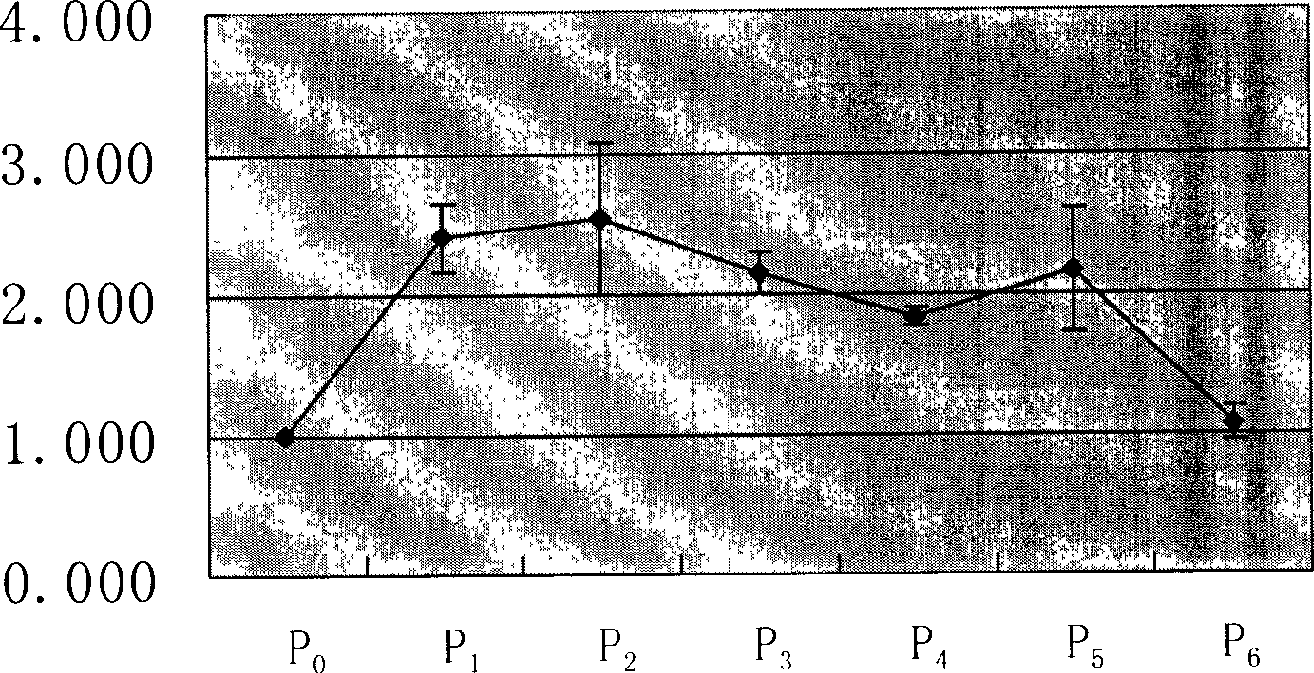Allogenic tissue engineered cartilage and its application
A tissue engineering and cartilage technology, applied in the fields of medicine and biomedical engineering, can solve the problems of lack of cartilage formation ability, limited application, loss of ability to secrete cartilage matrix, etc.
- Summary
- Abstract
- Description
- Claims
- Application Information
AI Technical Summary
Problems solved by technology
Method used
Image
Examples
preparation example Construction
[0047] The preparation method of the tissue engineered cartilage of the present invention is simple and convenient, and only needs to mix a certain amount of said chondrocytes with pharmaceutically acceptable biodegradable materials.
[0048] The tissue-engineered cartilage formed by the method of the present invention is divided into two types, one is a compound composed of chondrocytes and injectable biomaterials, and the compound can be directly injected into various parts of the body such as subcutaneous tissue and cartilage defects. The other is a compound of chondrocytes and non-injectable, which can be directly implanted into various parts of the body such as subcutaneous tissue and cartilage defects.
[0049] The advantages of the present invention are:
[0050] (1) Solved the problem of insufficient source of seed cells for cartilage tissue engineering, and aborted embryos can provide a large source of chondrocytes;
[0051] (2) Compared with adult chondrocytes, embr...
Embodiment 1
[0055] Isolation and culture of human embryonic chondrocytes
[0056] The human fetus of spontaneous abortion, the gestational age is about 5 months; within 10 hours after delivery. Separation of articular cartilage by aseptic operation Cut the harvested cartilage into pieces about 2mm×2mm in size, place them in a 15ml centrifuge tube, wash them twice with PBS, mix them with 15mg of type II collagenase per 1g of cartilage tissue, and use serum-free Adjust the concentration of type II collagenase to 1 mg / ml in F-12 medium. Digest in a constant temperature shaker at 37°C for 16 hours, filter with 150-mesh stainless steel mesh, centrifuge at 1500r / min, remove the supernatant, wash twice with PBS, resuspend chondrocytes in F-12 conditioned medium, stain with trypan blue, and count under a microscope , Cell viability > 85% can be used for tissue construction.
[0057] The yield of chondrocytes isolated from aborted fetal articular cartilage was 2×10 7 -4×10 7 One / gram human fet...
Embodiment 2
[0059] Proliferation of human embryonic chondrocytes in vitro
[0060] The number of cells obtained after the cells of each generation are expanded by culture, divided by the number of cells inoculated before culture, is the proliferation rate of the cells of this generation; the proliferation rate curve is drawn according to the proliferation rates of cells of different generations. Assuming that the number of primary cells is 1, according to the previously calculated proliferation rate, calculate the number of cells that can be obtained in each passage after expansion, and then draw the cell proliferation curve.
[0061] The result is as figure 1 and figure 2 As shown, when the human fetal chondrocytes were subcultured in vitro, the primary generation hardly proliferated, the first generation began to proliferate, and the proliferation rate was the highest at the second and third passages; the continuous passage to the sixth passage lost the ability to proliferate.
PUM
 Login to View More
Login to View More Abstract
Description
Claims
Application Information
 Login to View More
Login to View More - R&D
- Intellectual Property
- Life Sciences
- Materials
- Tech Scout
- Unparalleled Data Quality
- Higher Quality Content
- 60% Fewer Hallucinations
Browse by: Latest US Patents, China's latest patents, Technical Efficacy Thesaurus, Application Domain, Technology Topic, Popular Technical Reports.
© 2025 PatSnap. All rights reserved.Legal|Privacy policy|Modern Slavery Act Transparency Statement|Sitemap|About US| Contact US: help@patsnap.com



